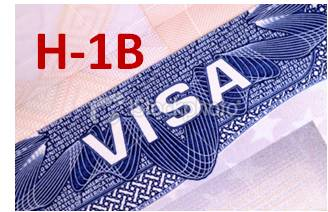 Understanding legal terminology can be one of the biggest hurdles a prospective immigrant faces when seeking to come to the U.S. Indeed, with all the abbreviations, special clauses, and minute differences between the various types of work visas, it can be incredibly difficult to keep track of what would work best for you in your situation. Fortunately, here’s a guide to some of the more common non-immigrant work visas and how they differ from and may be an alternative to the H1-B visa.
Understanding legal terminology can be one of the biggest hurdles a prospective immigrant faces when seeking to come to the U.S. Indeed, with all the abbreviations, special clauses, and minute differences between the various types of work visas, it can be incredibly difficult to keep track of what would work best for you in your situation. Fortunately, here’s a guide to some of the more common non-immigrant work visas and how they differ from and may be an alternative to the H1-B visa.
On April 1, 2018, the United States Citizenship and Immigration Service (USCIS) begins accepting H1-B visa applications for the 2019 fiscal year (which starts on October 1, 2018). It received 233,000 applications in less than a week and conducted a random lottery to select the 65,000 petitions that would be eligible for processing.
The H-1B visa program enables U.S. employers to hire highly educated foreign professional workers for “specialty occupations” — jobs that require at least a bachelor’s degree or the equivalent in the field of specialty. These foreign workers provide needed, specialized, or unique skills, fill a temporary labor shortage and/or supply global expertise.Holders of these visas can stay in the United States for up to six years and beyond the sixth year if they have an approved petition for immigrant worker (Form I-140).
Why Do The Early H1-B Visas Cut Off?
H1-B visas are limited to 85,000 per year. 20,000 are reserved for applicants with Master's degrees from U.S. Universities. This numerical limit is further reduced by free-trade agreements that specifically allocate 6,800 H1-B visas for nationals of Singapore and Chile making only 58,200 visas available in the standard H1-B pool.
Who Is Exempt From The H1-B Cap?
The following cases are exempt from the H1-B cap: 1) extensions for current H1-B workers, whether for a new or existing employer in sequential employment situations; 2) concurrent employment in a second H1-B position; 3) amended petitions; 4) H1-B employment for nationals of Chile or Singapore, 5) petitions for new employment at an exempt organization such as a nonprofit research organization, an institution of higher education or an affiliated non-profit entity and 6) 20,000 H1-B visas for graduates of U.S. universities who have earned a Master's or higher degree.
Impact of the Early Cut-Off of H1-B Visas
For those employers in need of hiring temporary professional foreign workers who were not selected in the random lottery, there may be alternative options available.
Other options available include:
The L-1 Intracompany Transferee Visa
The L-1, or intra-company transfer visa, facilitates the transfer of key employees from a foreign corporation to a U.S. branch, parent, subsidiary, or affiliated entity. This visa allows a U.S. company to bring in top-level managerial, executive, or specialized knowledge employees for a temporary period. The employee must have worked for the foreign company for at least one of the past three years or six months for blanket L scenario and must work for the U.S. company in a similar position. It need not be the same status as overseas. (For example: specialized knowledge overseas could be applied to a manager position in the United States. The job only needs to be in one of the three classes: manager, executive, or specialized knowledge). The foreign entity may pay the employee his or her salary but the U.S. company must control the employee’s performance of his or her work. Authority to engage and terminate the employee is strong evidence of control. There are no numerical limits on the L visa and the spouse of an L visa holder may apply for work authorization. The L visa is initially valid for up to three years in the case of an existing business and up to one year where a new business is established in the United States. There is a five-year limit on L-1B employees with specialized knowledge staying in the United States and a seven-year limit for L-1A managers and executives.
Consular posts generally see an increase in L-1 applications after the H1-B cap is reached. However, there is no legal reason why aliens eligible for H1-B status cannot legitimately seek out other type of visas, including L visas.
The Treaty-Trader/Treaty -Investor Visa (E-1/E-2)
E, or treaty visas, are available to persons or entities engaging in trade between the United States and their home country, or persons and entities coming to the United States to develop and direct enterprises in the United States in which they are investing substantial amounts of capital. The E-2 category includes individual investors and managers, executives, and essential-skills employees of business entities that do the investment. As a threshold issue, in order for a foreign national to qualify for this visa there must be a trader or investor treaty between the U.S. and the applicant’s home country. For treaty traders, the company set up in the United States must be at least 50% owned by a treaty country national but the applicant does not have to be an owner of the business. There must be a “substantial” flow of trade (either goods or services) between the U.S. business and the treaty national’s home country. The USCIS determines whether the trade is substantial on a case-by-case basis. Factors that may be considered include the nature of the business, the number of transactions, amount of trade and capital outlay.
With respect to an investment visa, again the business must be at least 50% owned by treaty nationals and there must be a substantial investment, which like the treaty-trader visa is determined on a case-by-case basis. The investor must have experience in the business and must be actively involved. The investor cannot simply invest in a company run by someone else. An E visa holder is normally admitted to the U.S. for a two-year period with unlimited two-year renewals. Spouses of E visa holders may apply for work authorization.
TN Status
Employers may continue to sponsor Canadian and Mexican nationals in TN status under the North American Free Trade Agreement (NAFTA). This visa is available to Mexican and Canadian nationals who have been offered a temporary position in one of the professions described in schedule 2 of NAFTA. The applicant must have the degree or credentials required for that profession. The TN visa is valid for three years and may be renewed indefinitely. A spouse of an employee in TN status is not eligible for work authorization.
The O Visa
Foreign nationals with extraordinary ability in the arts, sciences, athletics, education or business, may apply for an O visa. Beneficiaries in the sciences, athletics, education or business field must show that they have risen to the top of their field evidenced by national or international recognition. Beneficiaries in the arts must show prominence and a record of extraordinary achievement. Beneficiaries in the motion picture or television industry need to show a high-level of accomplishment, above that ordinarily encountered in the field. The O visa is usually granted for three years and is renewed in one-year increments. The O visa may be renewed indefinitely. A spouse of an O visa holder cannot apply for work authorization.
The J-1 Exchange Visitor Visa
This visa is available to foreign nationals to enter the United States as exchange visitors to participate in government-approved exchange programs. First, the prospective employer must establish an approved exchange program. Such a program may be sponsored by government agencies, private businesses, or educational agencies. The foreign national may then enter the United States for the purpose of doing research, gaining training or studying. Depending on the foreign national’s qualifications and the type of exchange program, the J-1 visa is available anywhere from eighteen months for most trainees to forty-two months for professors and research scholars. Certain foreign nationals may be subject to a two-year home residency requirement at the end of their stay.
Unlike the previous visas outlined above, H2B visas don’t require specific education or training to obtain, but rather a particular set of circumstances. Companies can request H2B visas to be made available to hire more workers when: the company has a short-term need for more employees, the company cannot fill the needed part-time positions with US citizens, the company can prove that its needs are temporary, (or seasonal) and the visa is for non-agricultural temporary employment. H2B visas will also only be issued for the duration of the employer’s needs usually for 10-12 months.
Unless Congress raises the annual H1-B visa cap, employers will have to make use of other visas available to bring temporary workers to the United States for FY 2018. Readers are encouraged to contact their senators and representatives to push for an increase in the H-1B cap.
For More Information
Navigating the intricacies of the legal side of applying for a visa is as tough a task. Contact the Pollak legal team today –– we have the insight and the experience to ensure you the best legal counsel for your situation.
––
Karen-Lee Pollak is the Managing Attorney at Pollak PLLC located in Dallas, Texas. She is a frequent speaker, author and blogger on immigration issues. She can be reached at karenlp@pollakimmigration



